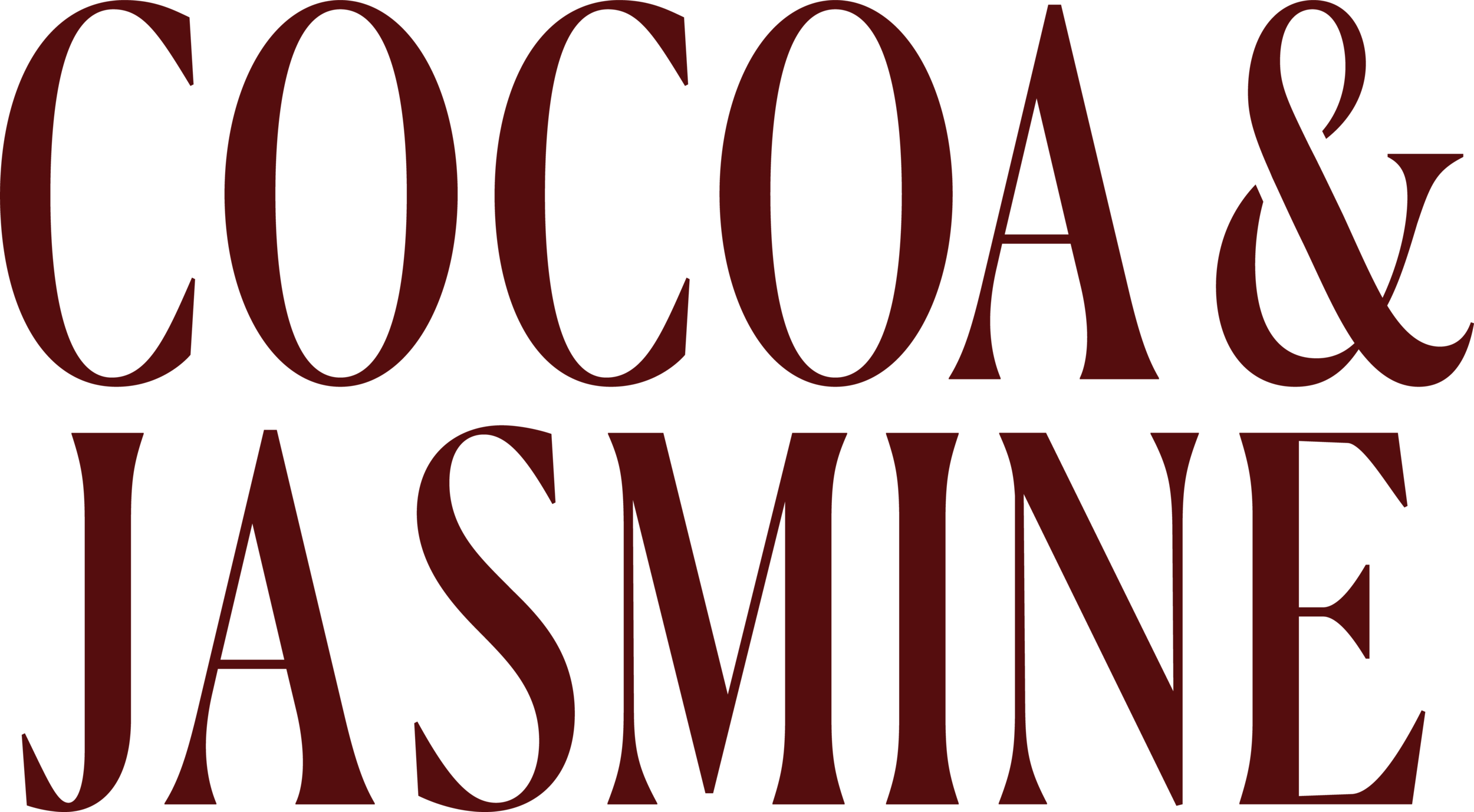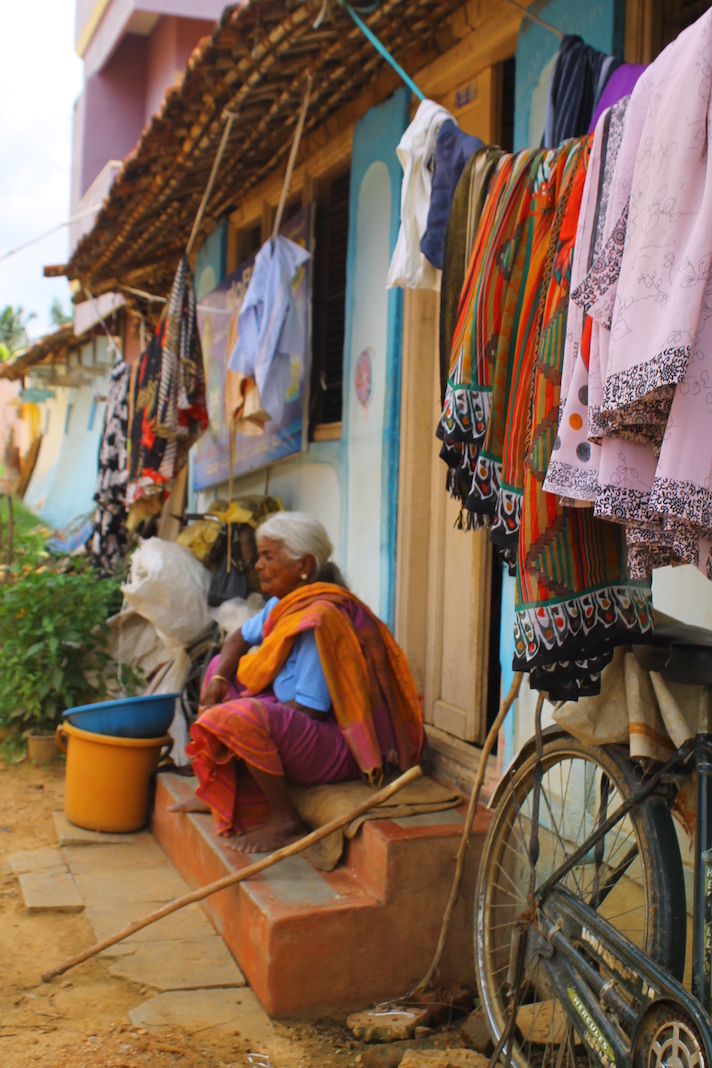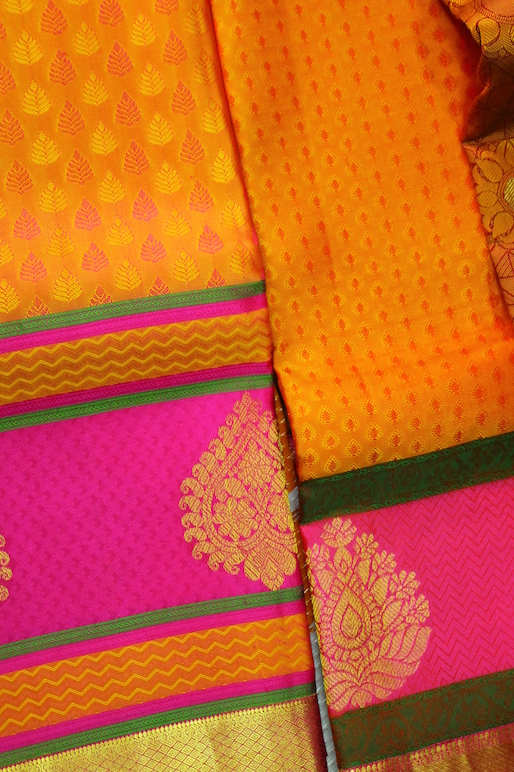Languishing tradition of Kodiyala Handloom Sarees
CULTURE AND BACKGROUND
Kodiyala- a village in Srirangapatna taluk, Mandya District, sets a mark in Karnataka history as one of the major weavers for the Royal Family of Mysore, especially during the reign of Tipu Sultan. It is also known for their history in weaving, Sugar-candies (Kallusakkare) and incense sticks. The weavers wove clothes for not only the royal families, but also politicians and other important personalities. The major patrons of Kodiyala Weaving were Tipu Sultan, Wodeyars, Indira Gandhi, S M Krishna etc.
The decline in this tradition has led to the unawareness of this art among the textile and design enthusiasts in and beyond Karnataka. The market chain of the products by Kodiyala is also very limited in number due to which, sales of these products are very minimal and limited to their vicinity. Demand for sarees are increasing day by day and people prefer beautiful or extravagant sarees at an affordable price, which power looms produce. Even though the material and weaves are not as strong and authentic as Handloom weaves, people choose to buy sarees woven by the machines it is cheaper and also mimics the grand look that the handloom attempts to provide. The designs of sarees change according to the requirement of the modern consumer market. The materials have also evolved in terms of blends. The weavers have switched to blends like Poly-cotton and Art silk than pure silk and cotton because of the increase in price of raw materials. Kodiyala, today, sells mostly sarees of silk, cotton, blends and cotton towels. However, Kodiyala also weaves many cotton sarees using Organic dyes.
Words and Photos by Astha Khubele
Kodiyala is home to hundreds of Padmashalis, a Telugu speaking Weavers Community, who migrated from Andhra Pradesh. Traditional weaving was done mainly on handlooms and was their primary source of income. They were a colony of weavers who produced “rich, colourful saris and dhotis, unique in nature and style with eye catching motifs.” (Madhusoodan & K R, "The village that wove clothes for Tipu, Indira - Times of India", 2012). Tipu Sultan, the ruler of Srirangapatna and Mysore was said to be immensely fond of cotton cloth woven and produced by the Kodiyala weavers. This began a long, proud relationship between the community and Mysore Royalty. The intricate design of kodiyala sarees by the weaver’s soon caught the eye of the royal household at Srirangapatna. What started as few orders of Kodiyala sarees by the royal family turned to have increased eventually and for almost all the members of the royal family including Tipu Sultan himself. Handlooms were mainly used by the weavers to weave the sarees since the reign of Tipu sultan and it used to take 3-4 days to complete a single saree to with 1-3 weavers working on it .
CURRENT STATE OF AFFAIRS
Industrialization of India post-independence brought modern looms or power looms to the village, which was pioneered by S M Krishna who connected a Direct Powerline from Tubinakere Power Station. These powerlooms could churn out a number of saris everyday with ‘minimal human intervention.’ Hence, Kodiyala mostly uses powerlooms now, which has led to a gradual, yet significant decline in the tradition of Handloom weaving in Kodiyala. The Family legacy of Handloom weaving among the Padmashali community in Kodiyala seems to be diminishing significantly due to the introduction of Powerlooms, financial instability among families, and lack of sufficient government funding. The introduction of powerloom has led to a decline in following the family heritage due to the reduction of manual labour, increase in production and consumes lesser quality of time as compared to handloom. The government of Karnataka seems to be contributing and encouraging this village to continue the tradition, however, it is not efficient or motivating enough to be followed.




















